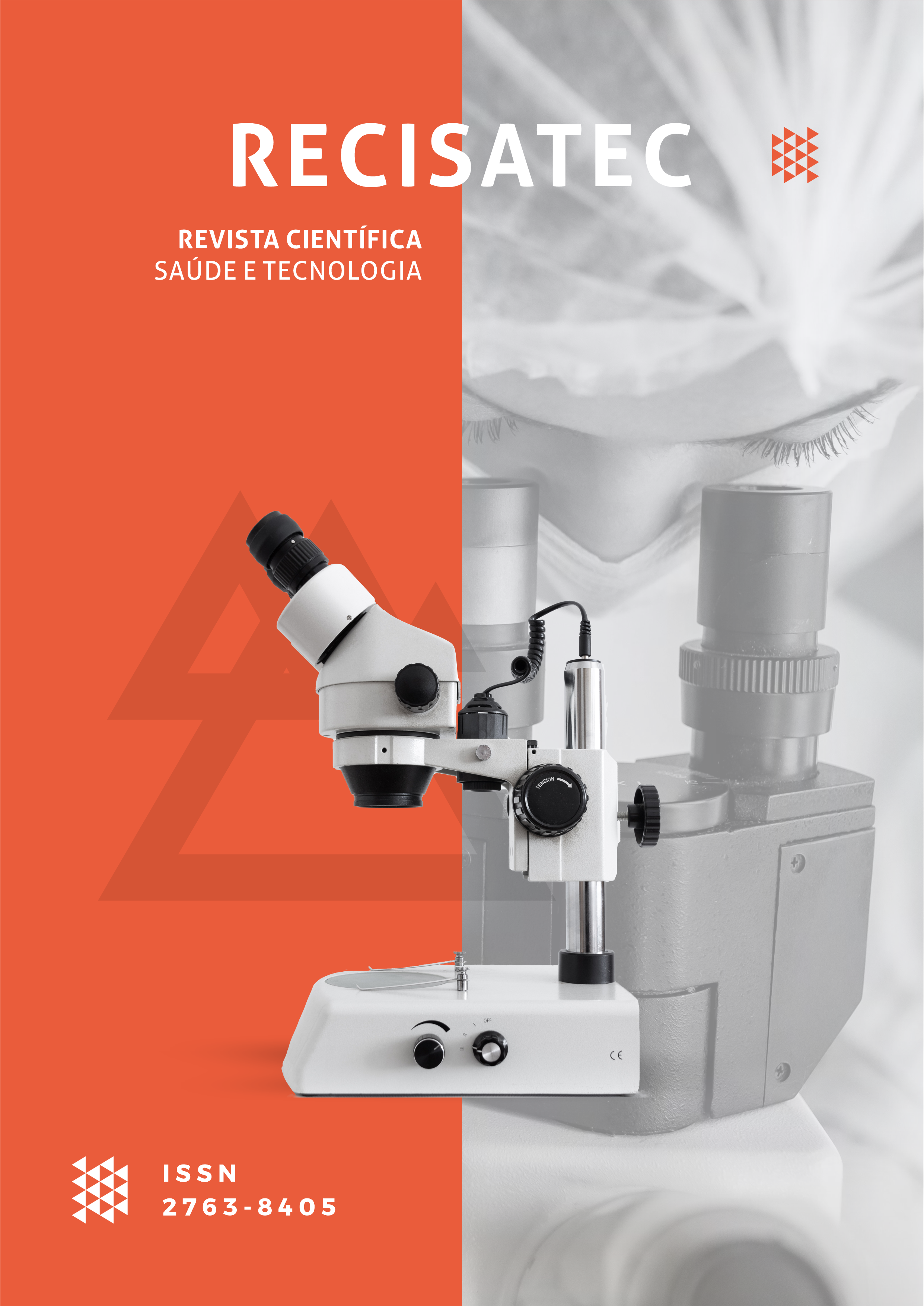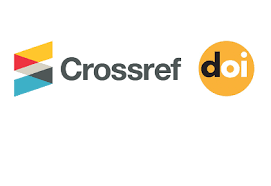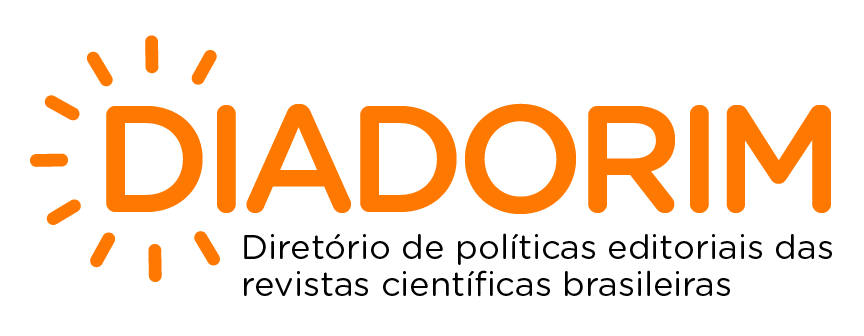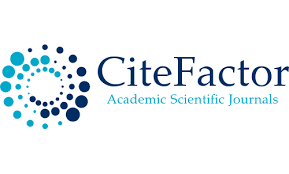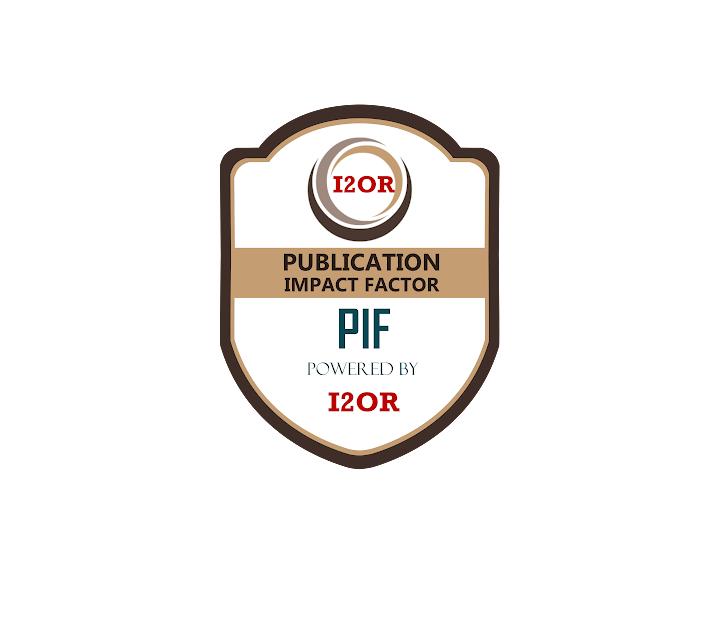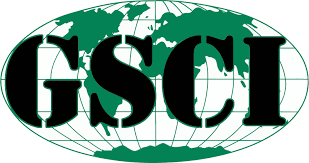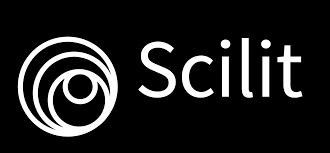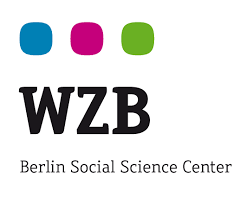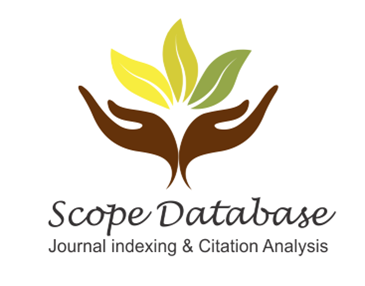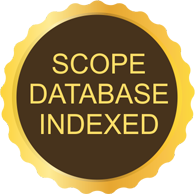CANDIDA sp, UMA BREVE REVISÃO BIBLIOGRÁFICA
DOI:
https://doi.org/10.53612/recisatec.v2i5.129Palavras-chave:
morfologia, fatores de virulência, manifestações clínicas, tratamento, CandidaResumo
Estima-se que no Reino Fungi existam seis milhões de espécies distribuídas pelo mundo e, elas variam, desde espécies comestíveis até aquelas que podem afetar os seres humanos de diversas formas, causando doenças, as micoses. O gênero Candida possui uma gama em variedades de espécies de importância clínica e biológica. Diversas são as síndromes clínicas causadas por esse gênero, como a candidíase vulvovaginal, candidíase oral e a candidemia. A importância desses fungos na área biológica motivou esse estudo com o objetivo de analisar a produção científica sobre Candida sp e suas variáveis importantes. As leveduras de Candida sp são comensais ao humano, mas diante de um desequilíbrio da microbiota normal ou uma supressão do sistema imune essas leveduras aumentam em quantidade e podem levar a patologias clínicas, são as principais causadoras de infecções fúngicas, chegando a 90%. A partir do desequilíbrio nos mecanismos de defesa ou por fatores externos ocasionando uma alteração da flora normal, algumas espécies, que são colonizadoras, podem levar à candidíase. Apresenta-se de várias formas, desde formas clínicas localizadas (mucocutânea e cutânea) à infecção disseminada (candidemia). Os antifúngicos usados para o tratamento podem ser fungicidas, causando lise dos microrganismos ou fungistáticos, inibindo o crescimento. É necessário maior conhecimento das espécies de Candida e suas variáveis clínicas.
Downloads
Referências
ANTUNES, F., VERRÍSIMO, C., PEREIRA, Á.A., SABINO, R. Candida auris: Emergência Recente de um Fungo Patogénico Multirresistente. Candida auris: The Recent Emergence of a Multiresistant Pathogenic Fungi. Acta Med Port. 2020;33(10),680-684. http://doi: 10.20344/amp.12419. DOI: https://doi.org/10.20344/amp.12419
BARBOSA, A., ARAÚJO, D., RIBEIRO, E., HENRIQUES, M., SILVA, S. Candida albicans Adaptation on Simulated Human Body Fluids under Different pH. Microorganisms. 2020; 8(4):511. https://www.mdpi.com/2076-2607/8/4/511. DOI: https://doi.org/10.3390/microorganisms8040511
BHATTACHARYA S, ESQUIVEL BD, WHITE TC. Overexpression or Deletion of Ergosterol Biosynthesis Genes Alters Doubling Time, Response to Stress Agents, and Drug Susceptibility in Saccharomyces cerevisiae. mBio. 2018;9(4):e01291-18. Published 2018 Jul 24. doi:10.1128/mBio.01291-18. DOI: https://doi.org/10.1128/mBio.01291-18
BLUMBERG, H.M., JARVIS, W.R., SOUCIE, J.M., et al. Risk Factors for candida bloodstream infections in surgical intensive care unit patients: the NEMIS prospective multicenter study. The National Epidemiology of Mycosis Survey. Clin Infect Dis. 2001;33(2):177-186. https://doi:10.1086/321811 DOI: https://doi.org/10.1086/321811
BOJANG E, GHUMAN H, KUMWENDA P, HALL RA. Immune Sensing of Candida albicans. J Fungi (Basel). 2021;7(2):119. Published 2021 Feb 6. doi:10.3390/jof7020119. DOI: https://doi.org/10.3390/jof7020119
CAMPINHO, L. C. P., SANTOS, S. M. V., & AZEVEDO, A. C. Probióticos em mulheres com candidíase vulvovaginal: qual a evidência?. Revista Portuguesa de Clínica Geral. 2019; 35(6), 465–468. https://doi.org/10.32385/rpmgf.v35i6.12116. DOI: https://doi.org/10.32385/rpmgf.v35i6.12116
CORNELY, O.A., BASSETTI, M., CALANDRA, T., et al. ESCMID* guideline for the diagnosis and management of Candida diseases 2012: non-neutropenic adult patients. ClinMicrobiolInfect. 2012;18 Suppl 7:19-37. http://doi: 10.1111/1469-0691.12039. DOI: https://doi.org/10.1111/1469-0691.12039
CORTÉS, J. A., RUIZ, J. F., MELGAREJO-MORENO, L. N., & LEMOS, E. V. Candidemia en Colombia. Biomédica. 2020; 40(1), 195–207. https://doi.org/10.7705/biomedica.4400. DOI: https://doi.org/10.7705/biomedica.4400
DÍAZ, N. A., FARINA, J., HERRERA, J., & EZCURRA, M. C. Candidemia: características en los adultos mayores. Revista chilena de infectología. 2020; 37(3), 288–294. https://doi.org/10.4067/s0716-10182020000300288. DOI: https://doi.org/10.4067/s0716-10182020000300288
FARHAN MA, MOHARRAM AM, SALAH T, SHAABAN OM. Types of yeasts that cause vulvovaginal candidiasis in chronic users of corticosteroids. Med Mycol. 2019;57(6):681-687. doi:10.1093/mmy/myy117. DOI: https://doi.org/10.1093/mmy/myy117
FIRACATIVE, C. Invasive fungal disease in humans: are we aware of the real impact? Memórias do Instituto Oswaldo Cruz. 2020; 115. https://doi.org/10.1590/0074-02760200430. DOI: https://doi.org/10.1590/0074-02760200430
FORSBERG, K., WOODWORTH, K., WALTERS, M., et al. Candida auris: The recent emergence of a multidrug-resistant fungal pathogen. Med Mycol. 2019; 57(1):1-12. http://doi: 10.1093/mmy/myy054. DOI: https://doi.org/10.1093/mmy/myy054
HANI, U., SHIVAKUMAR, H.G., VAGHELA, R., OSMANI, R.A., SHRIVASTAVA, A. Candidiasis: a fungal infection-current challenge and progress in prevention and treatment. Infect Disord Drug Targets. 2015; 15(1):42-52. http://doi:10.2174/1871526515666150320162036. DOI: https://doi.org/10.2174/1871526515666150320162036
HUBE B, NAGLIK J. Candida albicans proteinases: resolving the mystery of a gene family. Microbiology 2001;147:1997- 2005. 4. Allistair JP, Brown AR, Gow AR. Regulatory networks controlling Candida albicans morphogenesis. Trends Microbiol 1999;7(8):333-8. DOI: https://doi.org/10.1099/00221287-147-8-1997
KUMAMOTO, C.A., GRESNIGT, M.S., HUBE, B. The gut, the bad and the harmless: Candida albicans as a commensal and opportunistic pathogen in the intestine. Curr OpinMicrobiol. 2020; 56:7-15.http://doi:10.1016/j.mib.2020.05.006. DOI: https://doi.org/10.1016/j.mib.2020.05.006
LAM, J. M. Opportunistic Fungal Infection in children and management. Current Opinion in Pediatrics. 2018; 30(4), 514–519. https://doi.org/10.1097/mop.0000000000000651. DOI: https://doi.org/10.1097/MOP.0000000000000651
LAMOTH, F., LOCKHART, S. R., BERKOW E.L., CALANDRA T. Changes in the epidemiological landscape of invasive candidiasis. J Antimicrob Chemother. 2018;73(suppl_1):i4-i13. https://doi.org/10.1093/jac/dkx444. DOI: https://doi.org/10.1093/jac/dkx444
LAZO, V., HERNÁNDEZ, G., & MÉNDEZ, R. Candidiasis sistémica en pacientes críticos, factores predictores de riesgo. Horizonte Médico (Lima). 2018; 18(1), 75–85. https://doi.org/10.24265/horizmed.2018.v18n1.11. DOI: https://doi.org/10.24265/horizmed.2018.v18n1.11
LEÓN, C., RUIZ-SANTANA, S., SAAVEDRA, P., et al. Usefulness of the "Candida score" for discriminating between Candida colonization and invasive candidiasis in non-neutropenic critically ill patients: a prospective multicenter study. Crit Care Med. 2009;37(5):1624-1633. http://doi:10.1097/CCM.0b013e31819daa14. DOI: https://doi.org/10.1097/CCM.0b013e31819daa14
LÓPEZ-ÁVILA, K., DZUL-ROSADO, K. R., LUGO-CABALLERO, C., ARIAS-LEÓN, J. J., & ZAVALA-CASTRO, J. E. Mecanismos de resistência antifúngica de los azoles en Candida albicans. Una revisión. Revista Biomédica. 2016; 27(3). https://doi.org/10.32776/revbiomed.v27i3.541. DOI: https://doi.org/10.32776/revbiomed.v27i3.541
LORTHOLARY, O., RENAUDAT, C., SITBON, K, et al. Worrisome Trends in incidence and mortality of candidemia in intensive care units (Paris area, 2002-2010). Intensive Care Med. 2014;40(9):1303-1312.https://doi.org/10.1007/s00134-014-3408-3. DOI: https://doi.org/10.1007/s00134-014-3408-3
MAYA-RICO A. M., CARDONA-CASTRO N. Candidiasis mucocutánea crónica: una mirada al entendimiento genético. Iatreia. 2018; 31(4):393-9. https://doi.org/10.17533/udea.iatreia.v31n4a06. DOI: https://doi.org/10.17533/udea.iatreia.v31n4a06
OLIVEIRA, V. M., KHALIL, N. M., & CARRARO, E. Black and white teas as potential agents to combine with amphotericin B and protect red blood cells from amphotericin B-mediated toxicity. Brazilian Journal of Biology, 2018; 78(4) 673–678. https://doi.org/10.1590/1519-6984.171693. DOI: https://doi.org/10.1590/1519-6984.171693
ONISHI J, MEINZ M, THOMPSON J, et al. Discovery of novel antifungal (1,3)-beta-D-glucan synthase inhibitors. Antimicrob Agents Chemother. 2000;44(2):368-377. doi:10.1128/AAC.44.2.368-377.2000. DOI: https://doi.org/10.1128/AAC.44.2.368-377.2000
PEREIRA, F. G., MARQUETE, R., DOMINGOS, L. T. ROCHA, M. E. N., FERREIRA-PEREIRA, A., MANSUR, E., & MOREIRA, D. L. Antifungal Activities Of The Essential Oil And its fractions rich in sesquiterpenes from leaves of Casearia sylvestris Sw. Anais da Academia Brasileira de Ciências. 2017; 89(4), 2817–2824. https://doi.org/10.1590/0001-3765201720170339. DOI: https://doi.org/10.1590/0001-3765201720170339
POISSY, J., DAMONTI, L., BIGNON, A., et al. Risk Factors for candidemia: a prospective matched case-control study. Crit Care. 2020;24(1):109. https://doi:10.1186/s13054-020-2766-1. DOI: https://doi.org/10.1186/s13054-020-2766-1
POLKE M, HUBE B, JACOBSEN ID. Candida survival strategies. Adv Appl Microbiol. 2015;91:139-235. doi:10.1016/bs.aambs.2014.12.002. DOI: https://doi.org/10.1016/bs.aambs.2014.12.002
REINHARDT, L. C., NASCENTE, P. S. RIBEIRO, J.S., GUIMARAES, V. B. S., ETGES, A., & LUND, R. G. Sensitivity. To Antifungals Candida spp samples isolated from cases of chronic atrophic candidiasis (CAC). Brazilian Journal of Biology. 2020; 80(2), 266–272. https://doi.org/10.1590/1519-6984.190454. DOI: https://doi.org/10.1590/1519-6984.190454
ROBBINS, N., WRIGHT, G.D., COWEN, L.E. Antifungal Drugs: The Current Armamentarium and Developmentof New Agents. Microbiol Spectr. 2016; 4(5), 4.5.19 https://doi.org/10.1128/microbiolspec.FUNK-0002-2016. DOI: https://doi.org/10.1128/microbiolspec.FUNK-0002-2016
ROCHA, W.R.V. da, NUNES, L.E. , NEVES, M.L.R. , XIMENES, E.C.P. de A. and Albuquerque, M.C.P. de A. . Candida genus - Virulence factores, Epidemiology, Candidiasis and Resistance mechanisms. Research, Society and Development.2021; 10, 4 , e43910414283. DOI:https://doi.org/10.33448/rsd-v10i4.14283. DOI: https://doi.org/10.33448/rsd-v10i4.14283
ROMANI L, BISTONI F, PUCCETI P. Fungi, dendritic cells and receptors: a host perspective of fungal virulence. Trends Microbiol 2002;10(11):508-14. DOI: https://doi.org/10.1016/S0966-842X(02)02460-5
SANGLARD D, ISCHER F, PARKINSON T, FALCONER D, BILLE J. 2003. Mutações de Candida albicans na via biossintética de ergosterol e resistência a vários agentes antifúngicos . Antimicrob Agents Chemother 47 : 2404–2412. doi: 10.1128 / AAC.47.8.2404-2412.2003. DOI: https://doi.org/10.1128/AAC.47.8.2404-2412.2003
SILVA, D. B. D. S., RODRIGUES, L. M. C., ALMEIDA, A. A. D., OLIVEIRA, K. M. P. D. & GRISOLIA, A. B. Novel point mutations in the ERG11 gene in clinical isolates of azole resistant Candida species. Memórias do Instituto Oswaldo Cruz. 2016; 111(3), 192–199. https://doi.org/10.1590/0074-02760150400. DOI: https://doi.org/10.1590/0074-02760150400
SILVA, D. M. D., SOUZA, T. C. D., ALENCAR, C. F. D. C. SOUZA, I. D. S. D., BANDEIRA, M. F. C. L., & Fernandes, O. C. C. Virulence factors of Candida species from the oral mucosa and prostheses felder people from a riverside community in the Amazon state, Brazil. Revista de Odontologia da UNESP. 2019; 48. https://doi.org/10.1590/1807-2577.09419. DOI: https://doi.org/10.1590/1807-2577.09419
SILVA, M. G. C., RODRIGUES, G. S., GONCALVES, I. L., & GRAZZIOTIN, N. A. Candida species distribution and fluconazole susceptibility blood isolates a regional hospital in Passo Fundo, RS, Brazil. Jornal Brasileiro de Patologia e Medicina Laboratorial. 2015; 51(3), 158–161. https://doi.org/10.5935/1676-2444.20150027. DOI: https://doi.org/10.5935/1676-2444.20150027
STYLIANOU M, UVELL H, LOPES JP, ENQUIST PA, ELOFSSON M, URBAN CF. Novel highthroughput screening method for identification of fungal dimorphism blockers. J Biomol Screen. 2014; 20(2): 285–91. DOI: https://doi.org/10.1177/1087057114552954
TAGLIAFERRI, .E, MENICHETTI, F. Treatment Of Invasive Candidiasis: between guidelines and daily clinical practice. Expert RevAntiInfectTher. 2015;13(6):685-689. https://doi:10.1586/14787210.2015.10299. DOI: https://doi.org/10.1586/14787210.2015.1029916
VAN SCHALKWYK, J., YUDIN, M. H., YUDIN, M. H., ALLEN, V., BOUCHARD, C., BOUCHER, M., BOUCOIRAN, I., CADDY, S., CASTILLO, E., KENNEDY, V. L., MONEY, D. M., MURPHY, K., OGILVIE, G., PAQUET, C., & VAN SCHALKWYK, J. Vulvovaginitis: Screening for and Management of Trichomoniasis, Vulvovaginal Candidiasis, and Bacterial Vaginosis. Journal of Obstetrics and Gynaecology Canada. 2015; 37(3),266–274.https://doi.org/10.1016/s1701-2163(15)30316-9. DOI: https://doi.org/10.1016/S1701-2163(15)30316-9
WILLEMS, H. M. E., AHMED, S. S., LIU, J., XU, Z., & PETERS, B. M. Vulvovaginal Candidiasis: A Current Understanding and Burning Questions. Journal of Fungi. 2020; 6(1), 27. https://doi.org/10.3390/jof6010027. DOI: https://doi.org/10.3390/jof6010027
Downloads
Publicado
Como Citar
Edição
Seção
Categorias
Licença
Copyright (c) 2022 RECISATEC - REVISTA CIENTÍFICA SAÚDE E TECNOLOGIA - ISSN 2763-8405

Este trabalho está licenciado sob uma licença Creative Commons Attribution 4.0 International License.
Os direitos autorais dos artigos/resenhas/TCCs publicados pertecem à revista RECISATEC, e seguem o padrão Creative Commons (CC BY 4.0), permitindo a cópia ou reprodução, desde que cite a fonte e respeite os direitos dos autores e contenham menção aos mesmos nos créditos. Toda e qualquer obra publicada na revista, seu conteúdo é de responsabilidade dos autores, cabendo a RECISATEC apenas ser o veículo de divulgação, seguindo os padrões nacionais e internacionais de publicação.

